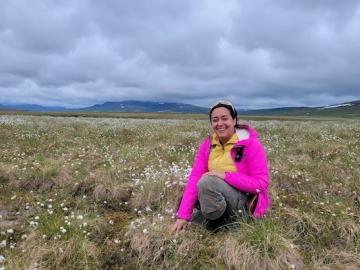
Filter News
Area of Research
- Advanced Manufacturing (1)
- Biology and Environment (40)
- Biology and Soft Matter (1)
- Building Technologies (2)
- Clean Energy (28)
- Computational Biology (1)
- Fusion and Fission (7)
- Isotopes (2)
- Materials (17)
- Materials for Computing (3)
- National Security (17)
- Neutron Science (5)
- Renewable Energy (1)
- Supercomputing (23)
News Type
Date
News Topics
- 3-D Printing/Advanced Manufacturing (6)
- Advanced Reactors (1)
- Artificial Intelligence (7)
- Big Data (7)
- Bioenergy (17)
- Biology (21)
- Biomedical (5)
- Biotechnology (2)
- Buildings (12)
- Chemical Sciences (6)
- Clean Water (5)
- Climate Change (24)
- Composites (3)
- Computer Science (13)
- Coronavirus (7)
- Critical Materials (3)
- Cybersecurity (3)
- Decarbonization (15)
- Energy Storage (8)
- Environment (30)
- Exascale Computing (4)
- Frontier (4)
- Fusion (4)
- Grid (6)
- High-Performance Computing (11)
- Hydropower (8)
- Irradiation (1)
- Isotopes (2)
- ITER (1)
- Machine Learning (6)
- Materials (19)
- Materials Science (7)
- Mercury (1)
- Microscopy (10)
- Nanotechnology (5)
- National Security (10)
- Net Zero (2)
- Neutron Science (5)
- Nuclear Energy (3)
- Partnerships (2)
- Physics (3)
- Polymers (2)
- Quantum Computing (5)
- Quantum Science (5)
- Security (2)
- Simulation (5)
- Space Exploration (3)
- Summit (5)
- Sustainable Energy (19)
- Transportation (5)
Media Contacts

Gang Seob “GS” Jung has known from the time he was in middle school that he was interested in science.

A crowd of investors and supporters turned out for last week’s Innovation Crossroads Showcase at the Knoxville Chamber as part of Innov865 Week. Sponsored by ORNL and the Tennessee Advanced Energy Business Council, the event celebrated deep-tech entrepreneurs and the Oak Ridge Corridor as a growing energy innovation hub for the nation.

ORNL has provided hydropower operators with new data to better prepare for extreme weather events and shifts in seasonal energy demands caused by climate change.

In human security research, Thomaz Carvalhaes says, there are typically two perspectives: technocentric and human centric. Rather than pick just one for his work, Carvalhaes uses data from both perspectives to understand how technology impacts the lives of people.

A new paper published in Nature Communications adds further evidence to the bradykinin storm theory of COVID-19’s viral pathogenesis — a theory that was posited two years ago by a team of researchers at the Department of Energy’s Oak Ridge National Laboratory.

Though Scott Stewart recently received an Early Career Award from the Institute of Nuclear Material Management, he is regarded as a seasoned professional in the nuclear field with over 10 years of experience.

With wildfires increasing in scope and intensity around the world, Fernanda Santos’ research into how such calamities affect soil carbon storage has taken on new urgency.

Researchers in the geothermal energy industry are joining forces with fusion experts at ORNL to repurpose gyrotron technology, a tool used in fusion. Gyrotrons produce high-powered microwaves to heat up fusion plasmas.

Global carbon emissions from inland waters such as lakes, rivers, streams and ponds are being undercounted by about 13% and will likely continue to rise given climate events and land use changes, ORNL scientists found.

ORNL researchers demonstrated a process for producing a moisture-stable, lightweight thermal insulation material using hollow silica particles, or HSPs.


